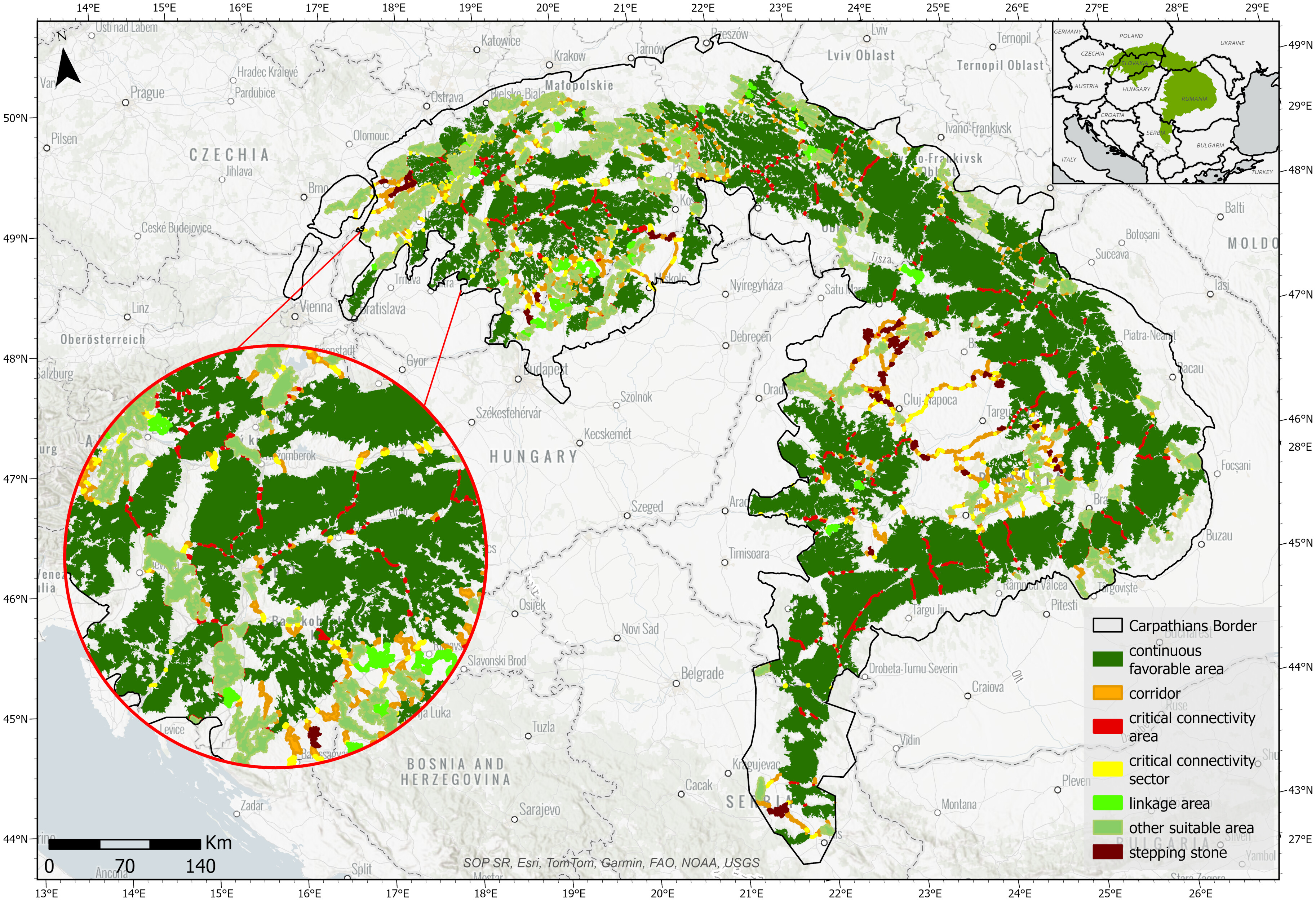Rethinking ecological connectivity in a changing world
NEW PAPER by Robin Naidoo, Cody Aylward, Wendy Elliott, Annika Keeley, Margaret Kinnaird, Michael Knight, Cristian-Remus Papp, Kanchan Thapa, and Rafael Antelo! It is a pleasure to share a remarkable article published by our colleague Cristi Papp (a member of our SESCARNIVORE team and external lecturer at UBB) in the prestigious journal Proceedings of the National Academy of Sciences (PNAS), focused on rethinking ecological connectivity for conservation. Congratulations to our colleague Cristi Papp, and many thanks for achieving this publication in PNAS — a rare accomplishment for both Romania and UBB in the field of ecology.

The ecological network for large carnivores in the Carpathian Ecoregion conservation area
General topic and importance
The article addresses the conservation of ecological connectivity in large natural landscapes, a crucial topic in the context of habitat loss and fragmentation caused by human activities. In an era marked by climate change and rapid urbanization, animals — especially migratory species or those with large ranges — depend on the ability to move freely for food, reproduction, and survival. Connectivity between protected areas and surrounding habitats thus becomes essential for preserving global biodiversity. The importance of this topic is further emphasized by international commitments to ecosystem restoration and climate change adaptation, in which connectivity plays a central role.
Main findings
The authors present a Theory of Change (ToC) that offers a strategic framework for large-scale connectivity conservation. The study draws on four significant landscapes: Africa (KAZA), Asia (Terai Arc), South America (Pantanal-Chaco/PACHA), and Europe (the Carpathians). These case studies show meaningful progress in some regions, but also declines in functional connectivity in others. Key success factors included:
- Collaboration between local communities and governments
- Integrating conservation into spatial planning
- Use of advanced technologies (e.g., GPS tracking, landscape genetics) to identify and manage ecological corridors
Contribution to science and practice
This study makes a significant contribution to the field of conservation by operationalizing the concept of ecological connectivity within a flexible strategic framework, validated through real-world case studies. By combining cutting-edge scientific methods with practical and participatory implementation, the article helps bridge the gap between planning and action — the so-called "implementation gap." Its major contribution lies in integrating ecological, socioeconomic, and cultural dimensions of connectivity, showing that local community involvement and institutional collaboration are keys to success. The paper has direct relevance for international biodiversity policy and offers a globally replicable model.
Cristi Papp's contribution was also sustained by the SESCARNIVORE project, as part of his ongoing work with WWF-România. While the published article does not include funding acknowledgments, we note this internal support to recognize the role of the SESCARNIVORE team in advancing ecological connectivity research.
